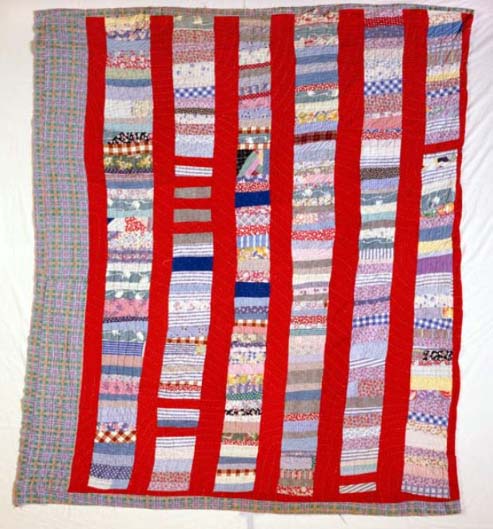
Have you ever seen a handmade quilt before? You may have seen one from your family, in a museum or in a book. Some quilts are made from a single piece of cloth. And others are made from many pieces of different colors and shapes of cloth. Some quilts tell the stories of the people who made them, the culture of their communities, or the history of their ancestors.
What is a quilt?
A quilt is a special kind of textile made from more than one piece of cloth. It is like a blanket and used for warmth, but the layers make it different. People make quilts by stitching a layer of padding between two other layers of fabric. The layers are held together by special stitching. And the process of stitching the layers together is called quilting. Quilting stitches can be straight and regular or done in patterns and designs.
Quilts are practical items for everyday use. Quilts can be practical because they help to keep people warm. And they can be very decorative. They can be pieces of art and show the creativity of the people who make them.
Quilting has also been used in making garments. And quilts have been made and used all over the world for thousands of years. One of the earliest examples of quilting is shown on a statue of an Egyptian pharaoh from about 3,400 B.C.
North Carolina Quilt History
Immigrants brought quilting with them to North America. The patterns and creativity they used often came from their own country’s traditions. For many people, making quilts began as a necessity. And they brought creativity and resourcefulness to it.
In the 1700s, Europeans brought the tradition of quilting with pieces of whole cloth. In the 1700s, most people used woven blankets for warmth because cloth was difficult to get. During that time, quilting was done by wealthy women and girls. And they often used quilting for decorative items for special occasions. When textile mills came to North Carolina in the 1880s and cloth was available, piecework quilting became more common. And quilting became more common whether families were rich or poor.
Enslaved African women became very skilled seamstresses and quilters. They used the quilting styles and traditions of Europeans for whom they worked. And they also brought designs and traditions from Africa. They made their own quilts at home and also held quilting parties. African women used patchwork designs and bold and colorful patterns. They also used quilts to tell stories. Some quilts included symbols of nature and religion. Some used a pattern that became known as the "crazy quilt." This is a type of patchwork quilt has irregular fabric patches. Crazy quilting became very popular in the 1880s and continues today.
Native Americans adopted the tradition of quilting in the 1880s from necessity. This was particularly true for Indians from the plains and western part of North America. Herds of buffalo and other game were reduced from hunting. So they looked to fabric and quilts to make blankets and coverings. Like African Americans, native tribes borrowed the quilting technique from Europeans. And then they used it to make something new and unique for their culture. For many, quilts preserve important life events, tribal stories, and community traditions.
Today quilting has also become a hobby and an art form for many people. They can express their culture and heritage and their art by quilting. Some quilters make quilts by themselves. And other quilters join quilting groups that are sometimes called "guilds" or "circles." And sometimes people still get together to have quilting events called "quilting bees."
If you were going to make a quilt, what would it look like and what story might you tell?